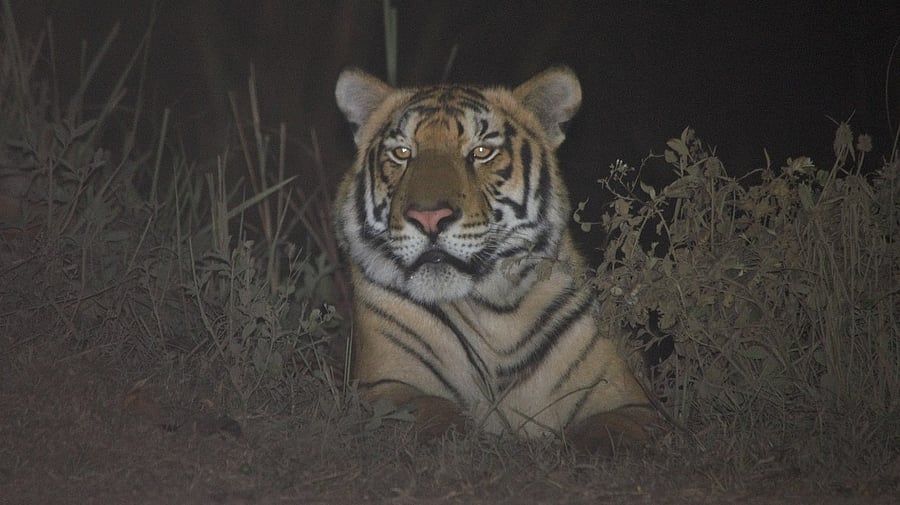
Tiger population in Kaziranga was 104 in 2022.
Credit: Kaziranga Tiger Reserve, Assam
Guwahati: Kaziranga Tiger Reserve in Assam, otherwise famous for one-horned rhinos, has emerged as the reserve with third highest density of tigers globally, a new estimate of tiger population in the park have stated.
A report titled "Status of Tigers in Kaziranga 2024", which was released in the Global Tiger Day on Tuesday, said tiger population in the reserve increased to 148 and density of tigers stood at 18.65 tigers per 100 square kilometers.
Karnataka's Bandipur tiger reserve tops the chart with tiger density of 19.83 per 100 sqkms followed by Corbett National Park in Uttarakhand (19.56). Corbett, however, has highest tiger population of 260 to 319 while the same in Bandipur was found to be between 154 and 191.
Tiger population in the 1,307sqkms Kaziranga was found to be 104 in 2022.
The “notable” increase in tiger numbers since the 2022 estimation was attributed to the first-ever sampling of the Biswanath Wildlife Division, where 27 tigers were recorded.
Credit: Kaziranga Tiger Reserve, Assam
103 days, 4,011 tiger images:
Kaziranga authorities said camera traps were deployed at 293 locations, capturing a dataset of 1,303,074 photographs, including 4,011 images of tigers. The camera traps exercise in three divisions of the 1,307sqkm tiger reserve continued for 103 days during 2023-24. The right-flank stripe patterns were used to identify 148 adult tigers in three divisions. This incuded 83 females, 55 males, and 10 individuals with undetermined gender.
Success story:
The director of Kaziranga National Park and Tiger Reserve, Sonali Ghosh said key drivers of the rise in tiger population was habitat expansion and protection. "An additional area of 200 sqkm including 12.82 sqkm of encroachment-free area has been added in recent years under Burhachapori- Laokhowa sanctuaries, bringing more habitat under protection of the tiger reserve. This strategic extension significantly expanded the landscape available to tigers, allowing for increased movement, breeding, and dispersal opportunities across divisions."
Enhanced use of technology, according to Ghosh revolutionized wildlife monitoring and protection. "The technological advancements have greatly improved anti-poaching measures, movement tracking, and habitat monitoring, leading to greater safety and better data.
Along with camera traps, tools such as M-STrIPES (Monitoring System for Tigers – Intensive Protection and Ecological Status), drones, and infrared-based electronic surveillance systems ("Electronic Eye"), are now integral to daily operations, Ghosh said.
"Crucially, the integration of advanced technologies with meticulous efforts of the forest frontline staff, including 113 trained Van Durgas, the female frontline staff of the Tiger Reserve, and the active support of civil society organizations and local communities have significantly helped fill historical data gaps," Ghosh said.
These scientific efforts, combined with strict anti-poaching measures, habitat restoration, and community-driven conservation programs, reinforce Kaziranga’s status as a globally significant refuge for tigers and other megafauna, ensuring the long-term preservation of its rich biodiversity.
Elated CM:
Elated over the latest tiger status report, Chief Minister Himanta Biswa Sarma posted on X, "From Kaziranga to Manas, Assam is not only limited to protecting the tiger, but it is also playing an important role in restoring the tiger's habitat. With the third highest tiger density in the world, extensive forest cover and bold steps against infiltration, the tiger, the treasure of Assam's forests, is walking proudly and bravely today.”